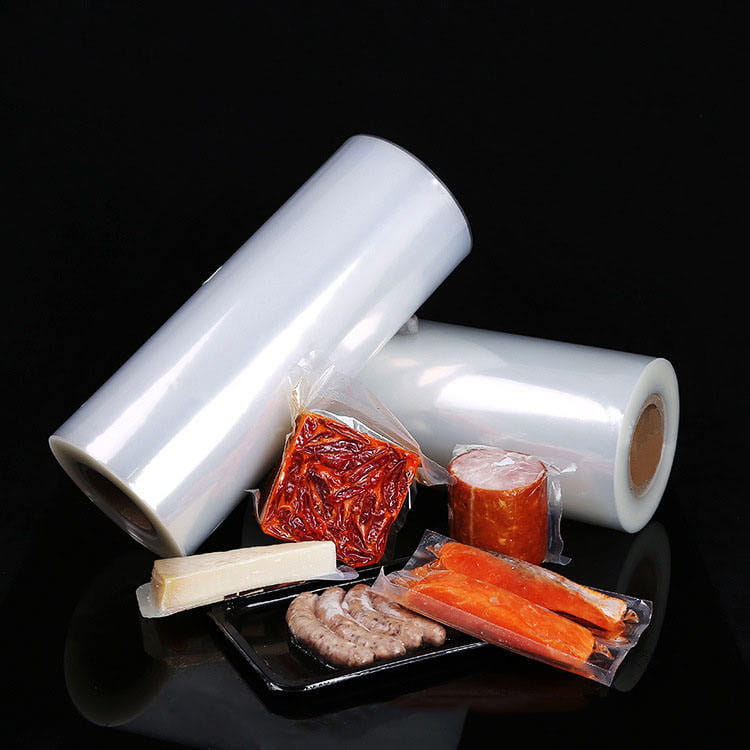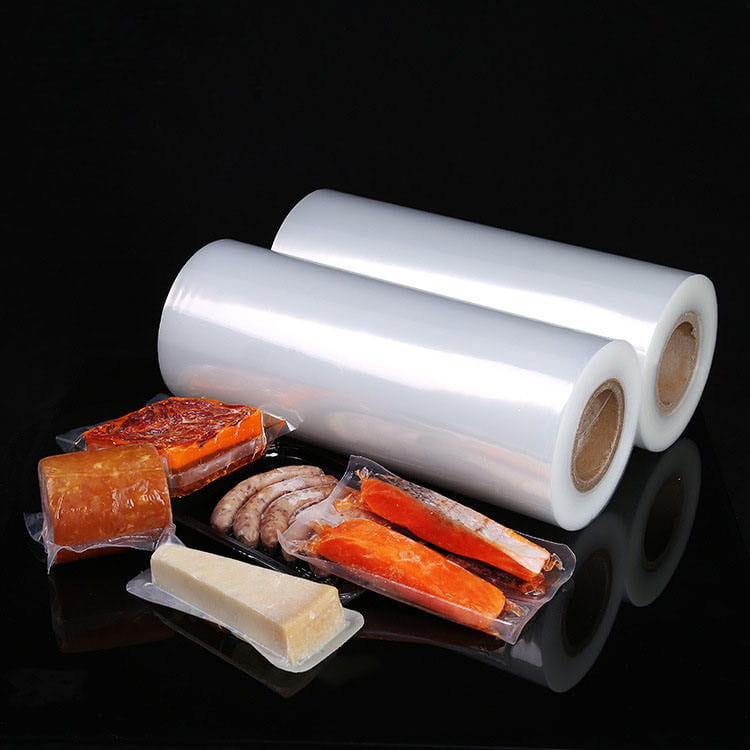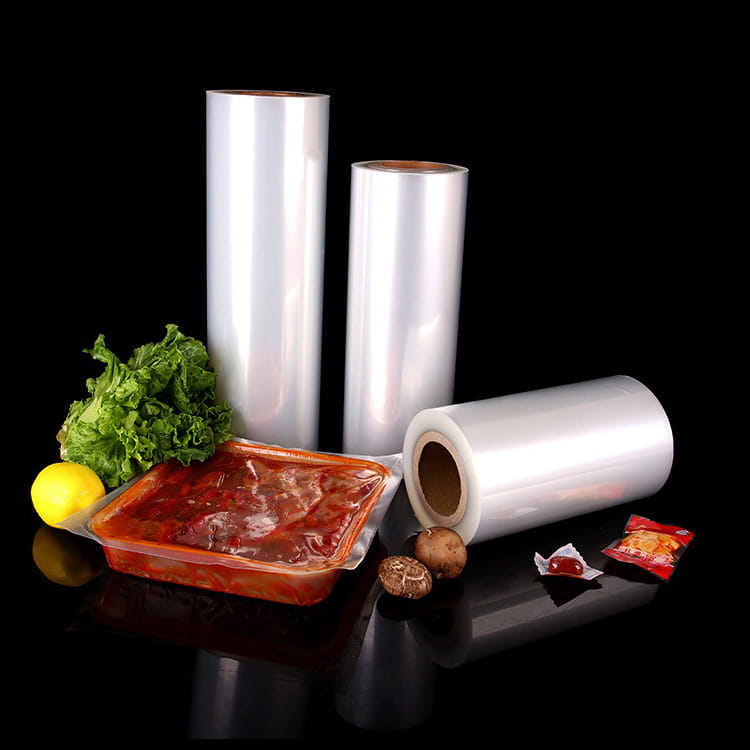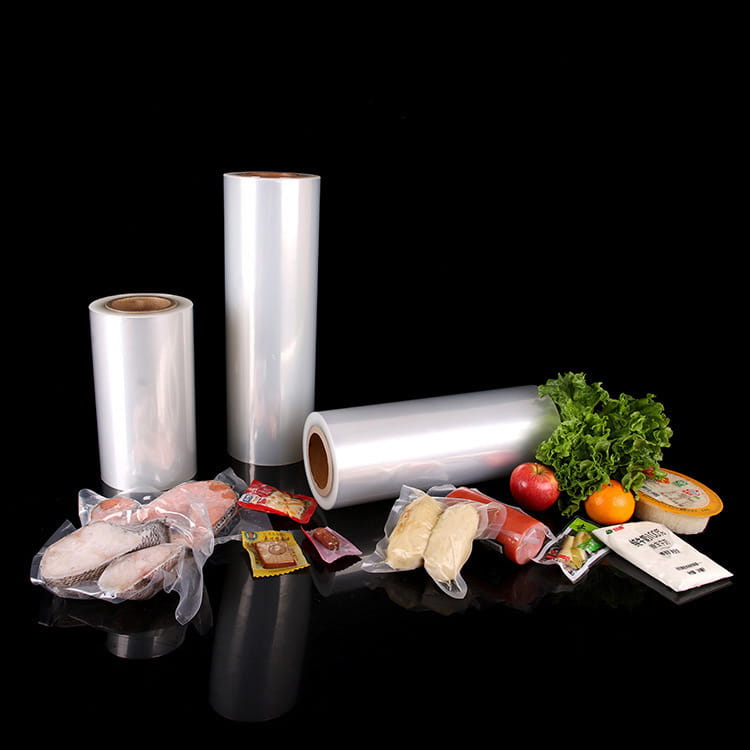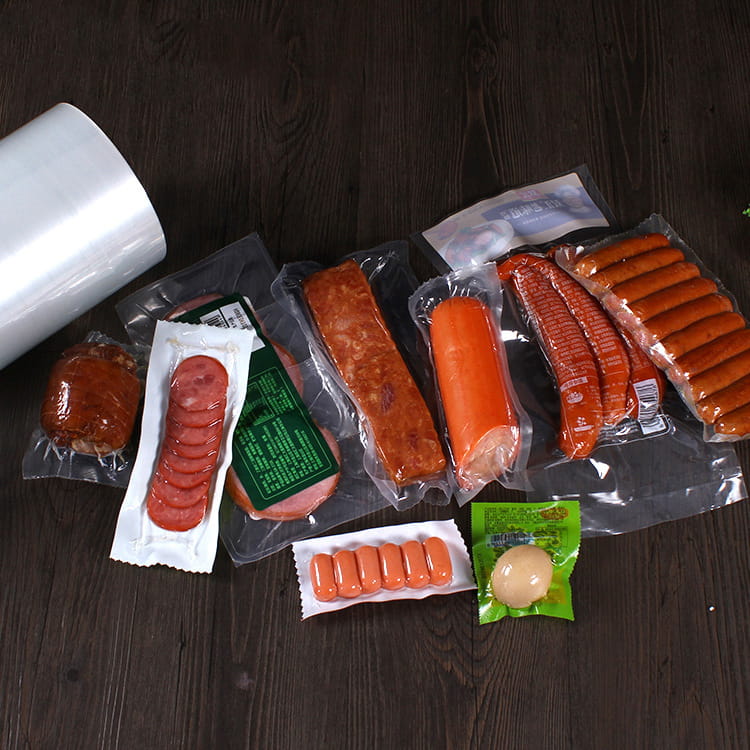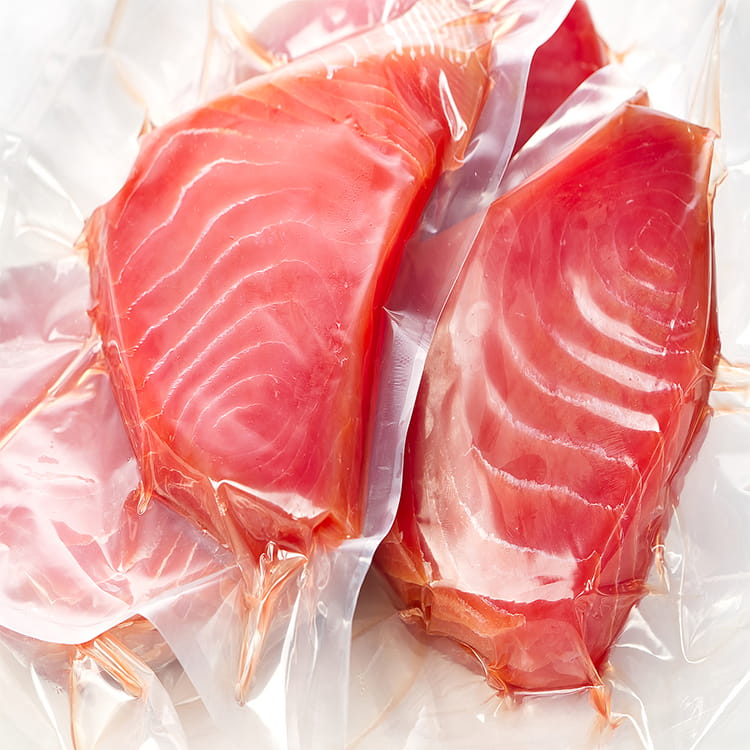In the field of packaging, thermoforming packaging film has become an ideal choice for many product packaging due to its unique properties and wide application. It can not only effectively protect the product, but also enhance the display effect of the product, playing an important role in the market promotion of the product.
What is Thermoforming Packaging Film ?
Thermoforming packaging film is a thermoplastic film. Under certain conditions, it is softened by heating, and then with the help of external forces (such as air pressure difference, mechanical pressure, etc.), it can fit the shape of the mold, and after cooling, it is fixed and formed into various packaging containers, such as blisters, trays, boxes, etc. This film plays a key role in the packaging industry and is suitable for the packaging needs of a variety of products.
Thermoforming packaging film principle
The forming process of thermoformed packaging films is based on the properties of thermoplastics. When the film is heated above the glass transition temperature (for amorphous plastics) or melting point (for crystalline plastics), the activity of the plastic molecular chains increases, and the film becomes soft and plastic. At this time, under the action of external pressure or vacuum suction, the film can quickly deform and closely fit the contour of the mold. For example, in blister packaging, by vacuuming under the mold, the softened film is sucked toward the mold to form a blister shape for containing the product. After the molding is completed, it is cooled, the plastic molecular chains are re-fixed, and the film retains the molded shape and becomes a container for packaging products.
Classification of thermoforming packaging films
1. Classification by material
l Polyethylene (PE) film : has good flexibility, impact resistance and chemical corrosion resistance. Among them, low-density polyethylene (LDPE) film is soft and transparent, and is often used for food packaging, daily necessities packaging, such as fresh food packaging in supermarkets; high-density polyethylene (HDPE) film has higher strength and rigidity, and can be used for packaging some heavier items, such as large barrels of liquid detergent packaging.
l Polypropylene (PP) film : high transparency, good gloss, good heat resistance and mechanical properties. Biaxially oriented polypropylene (BOPP) film is widely used in the packaging field, and is often used for packaging of cigarettes, candies, tea and other products. It can provide good moisture and dust protection for the products, while showing the exquisite appearance of the products.
l Polyvinyl chloride (PVC) film : It was once widely used in the packaging industry. It has high transparency and glossiness, and good heat shrinkage performance. However, since it may produce harmful substances during production and processing, which has a certain impact on the environment and human health, its use is currently subject to certain restrictions and is gradually being replaced by other environmentally friendly materials.
l Polyethylene terephthalate (PET) film : It has excellent tensile strength, transparency and glossiness, good barrier properties, and good heat resistance and cold resistance. It is widely used in food packaging, electronic product packaging and other fields, such as beverage bottle labels, protective films for electronic products, etc.
l Ethylene-vinyl acetate copolymer (EVA) film : It has good flexibility, impact resistance and heat sealing properties, and has good infrared barrier properties. It is often used in some packaging that requires high flexibility and good sealing properties, such as frozen food packaging, pharmaceutical packaging, etc.
2. Classification by function
l Ordinary thermoforming film : mainly used for packaging of general products, providing basic protection and display functions to meet common packaging needs.
l High barrier thermoforming film : plays an important role in packaging products that are sensitive to oxygen and water vapor, such as food, medicine, cosmetics, etc. Through special material formulation and processing technology, this type of film can effectively block the entry of external gas and moisture, extending the shelf life of the product. For example, when packaging foods that are easily oxidized and deteriorated, such as coffee and tea, high barrier films can maintain their fragrance and quality.
l Heat-shrinkable thermoforming film : It shrinks when heated, tightly wraps the product, and plays a role in fixing and protecting the product. It is commonly used in collective packaging of products, such as packaging multiple bottles of beverages or canned foods together with heat-shrinkable film for easy transportation and sales.
Characteristics of thermoforming packaging films
l Good flexibility and plasticity : It can adapt to various complex shapes of molds and be made into packaging containers of different shapes to meet the diverse product packaging needs. Whether it is a small tablet blister package or a large electronic equipment tray package, the thermoforming packaging film can easily handle it.
l High transparency : Most thermoforming packaging films have high transparency, which can clearly show the appearance of the product and attract consumers' attention. In food packaging, consumers can directly see the color, shape, etc. of the food, which increases the attractiveness of the product.
l Barrier properties : Depending on the material and structure, thermoformed packaging films can have certain barrier properties, blocking the intrusion of oxygen, water vapor, odor, etc., protecting products from the influence of the external environment and extending the shelf life of products. For example, films with high barrier properties can effectively prevent food from oxidizing and spoiling, and medicines from becoming ineffective due to moisture.
l Good mechanical properties : With certain tensile strength and tear resistance, it can protect the product from damage during packaging, transportation and storage. Even when subjected to certain external impact, the film can maintain the integrity of the packaging and ensure the safety of the product.
l Excellent processing performance : easy to process and shape, high production efficiency. Through the thermoforming process, the film can be quickly made into packaging containers of various shapes, suitable for large-scale industrial production. At the same time, the film can also be printed, coated and other subsequent processing to meet the aesthetic and functional requirements of product packaging.
l Environmental protection : With the increasing awareness of environmental protection, more and more thermoformed packaging films are made of degradable or recyclable materials to reduce pollution to the environment. For example, some biodegradable films can gradually decompose in the natural environment, reducing the harm to soil and water sources.
Application areas of thermoforming packaging films
l Food industry : It is one of the main application areas of thermoforming packaging films. From fresh fruits, vegetables, meat, seafood to processed foods such as biscuits, potato chips, candies, beverages, etc., thermoforming packaging films are widely used. It can provide good preservation, moisture-proof and anti-oxidation functions to ensure the quality and safety of food, while showing the attractive appearance of food to promote sales.
l Pharmaceutical industry : used for blister packaging of medicines, medicine bottle labels, medical device packaging, etc. Thermoforming packaging films can effectively protect medicines from contamination, maintain the stability of medicines, and prevent medicines from getting damp, oxidized, or reacting with other substances. At the same time, its good printing performance can clearly mark important information such as the name, dosage, and method of use of the medicine.
l Cosmetics industry : packaging various cosmetics, such as creams, lotions, lipsticks, eye shadows, etc. Thermoforming packaging films can be designed into various exquisite shapes, matching the high-end positioning of cosmetics, enhancing the visual effects and brand image of the products. At the same time, its barrier properties can prevent the active ingredients in cosmetics from volatilizing or deteriorating.
l Electronics industry : used for packaging of electronic products, such as mobile phones, tablet computers, headphones, batteries, etc. The film can protect electronic products from scratches, collisions and dust pollution, and the transparent characteristics make it easy to display the appearance and functions of the product. Some electronic products also use anti-static thermoforming packaging films to prevent static electricity from damaging electronic products.
l Daily necessities industry : covers the packaging of many daily necessities, such as shampoo, shower gel, toothpaste, paper towels, etc. Thermoforming packaging films can meet the diverse needs of daily necessities packaging, provide good protection and display effects, and are convenient for consumers to carry and use.
Production process of thermoforming packaging films
l Raw material preparation : According to the required film performance and purpose, select appropriate thermoplastic raw materials, such as PE, PP, PET, etc. These raw materials usually exist in the form of granules and need to be pre-treated by drying, mixing, etc. to ensure the quality and uniformity of the raw materials. For example, for PET raw materials with strong hygroscopicity, they need to be fully dried before processing to prevent moisture from causing defects such as bubbles in the film during processing.
l Extrusion molding : Add the pre-treated raw materials into the extruder, and the raw materials are transported forward and gradually melted by the rotation of the screw. In the barrel of the extruder, the raw materials are subjected to high temperature and high pressure and become a fluid melt. The melt is extruded through a die to form a sheet or tube-shaped blank. For example, for the production of flat films, T-die extrusion is usually used; for the production of tubular films, annular die extrusion is used.
l Stretching : In order to improve the performance of the film, such as strength, transparency, barrier properties, etc., it is usually necessary to stretch the extruded blank. Stretching can be done in one direction (uniaxial stretching) or in two directions (biaxial stretching). Uniaxial stretching can improve the strength of the film in the stretching direction, while biaxial stretching can give the film good properties in both directions. The stretching process is generally carried out on special stretching equipment, and by controlling parameters such as stretching temperature, stretching speed and stretching multiple, a film with specific properties can be obtained.
l Thermoforming : The stretched film is heated to a softened state and then placed on a mold. It is made to fit the shape of the mold through air pressure difference (vacuum forming or compressed air forming) or mechanical pressure to form various packaging containers. During the thermoforming process, parameters such as heating temperature, heating time and forming pressure need to be precisely controlled to ensure the quality and accuracy of the forming. For example, during the thermoforming process of blister packaging, a vacuum is drawn under the mold to quickly fit the softened film to the mold to form a blister shape.
l Cooling and shaping : The formed film needs to be cooled to reduce its temperature to below the glass transition temperature to fix the formed shape. The cooling method usually includes water cooling, air cooling or a combination of the two. The cooling process should be uniform and fast to avoid deformation, uneven shrinkage and other problems of the film.
l Post-processing : According to the needs of the product, the formed packaging container is post-processed, such as printing, coating, punching, etc. Printing can add product information, brand logos, patterns, etc. on the packaging container to enhance the product's publicity effect; coating can improve the film's barrier properties and wear resistance; punching is to cut the formed large piece of packaging material into individual packaging containers for subsequent use and packaging.
Market status of thermoforming packaging films
With the development of the global economy and the increasing requirements of consumers for product packaging, the thermoforming packaging film market has shown a trend of sustained growth. Driven by strong demand from industries such as food, medicine, cosmetics, and electronics, the market size of thermoforming packaging films continues to expand.
From the perspective of regional distribution, Asia Pacific is the world's largest thermoforming packaging film market, mainly due to the region's large population base, rapid economic growth and increasing consumption capacity. Especially in countries such as China and India, with the acceleration of urbanization and the improvement of residents' living standards, the demand for various packaging products continues to be strong. At the same time, the manufacturing industries in these countries are also developing continuously, further promoting the prosperity of the thermoforming packaging film market.
North America and Europe are also important markets for thermoforming packaging films. Their markets are relatively mature, and consumers have stricter requirements on packaging quality, environmental protection and functionality. In these regions, high-end, environmentally friendly thermoforming packaging film products are favored by consumers, and market competition is mainly concentrated in product innovation, quality improvement and brand building.
From the perspective of market competition, the thermoforming packaging film industry is highly competitive, with numerous manufacturers. Large multinational companies dominate the market with their advanced technology, complete production equipment and extensive sales network. At the same time, some regional small and medium-sized enterprises also occupy a certain market share in specific fields or regions through differentiated competition strategies. In order to stand out in the fierce market competition, companies continue to increase R&D investment, develop new products and technologies, improve production efficiency, and reduce production costs to meet the increasingly diverse needs of customers.
Future development trend of thermoforming packaging films
l Environmental protection : With the increasingly stringent environmental regulations and the increasing environmental awareness of consumers, environmentally friendly thermoforming packaging films will become the mainstream development direction of the market. Degradable materials, such as biodegradable polyesters (such as polylactic acid PLA, polyhydroxyalkanoates PHA, etc.), starch-based materials, etc., will be more widely used. These materials can gradually decompose in the natural environment, reduce pollution to the environment, and meet the requirements of sustainable development. At the same time, recycling and reuse technology will continue to develop, improve the recycling rate of thermoforming packaging films, and reduce resource waste.
l High performance : In order to meet the higher performance requirements of packaging films in different industries, thermoforming packaging films will develop in the direction of high performance. For example, developing films with higher barrier properties to better protect products that are sensitive to oxygen, water vapor, etc.; improving the mechanical properties of the film so that it can withstand more severe transportation and storage conditions; enhancing the heat resistance and cold resistance of the film to broaden its application range. Through material innovation, process optimization and structural design, the comprehensive performance of thermoforming packaging films will be continuously improved.
l Personalized customization : The diversification of consumer demand has prompted product packaging to develop in the direction of personalized customization. Thermoforming packaging film companies will pay more attention to cooperation with customers and provide personalized packaging solutions based on customer product characteristics, brand positioning and market demand. From film material selection, color design, shape customization to printed patterns and text, they can meet customers' specific requirements, create a unique packaging image for the product, and enhance the market competitiveness of the product.
l Intelligence : With the continuous development of technologies such as the Internet of Things and sensors, intelligent packaging will become an important development trend for thermoforming packaging films. Sensors embedded in the film can monitor the quality, temperature, humidity and other information of the product in real time, and transmit this information to consumers or related companies through wireless communication technology, so as to achieve full monitoring and management of the product. For example, in food packaging, sensors can monitor the freshness and shelf life of food, reminding consumers to eat it in time, and also provide product quality data for companies to optimize production and logistics management.
l Digital production : The application of digital technology in the production of thermoforming packaging films will continue to deepen, realizing intelligent control and management of the production process. Through digital design, simulation analysis and automated production equipment, it is possible to improve production efficiency, reduce production costs and enhance the stability of product quality. At the same time, digital production can also achieve traceability of the production process, making it easier for companies to monitor and optimize the production process.
As an important material in the packaging field, thermoforming packaging film occupies an important position in the market with its unique properties and wide application. With the continuous advancement of science and technology and changes in market demand, thermoforming packaging film will continue to develop in the direction of environmental protection, high performance, personalized customization, intelligent and digital production, bringing more innovations and opportunities to the packaging industry and better meeting the needs of various industries for product packaging.


 English
English عربى
عربى



